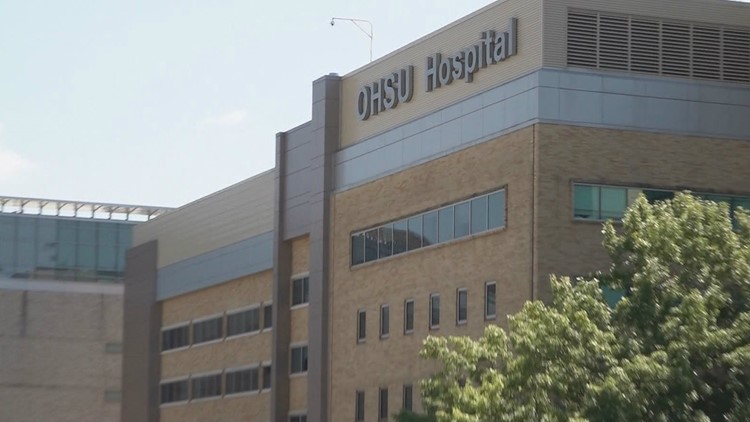PORTLAND, Ore. — Oregon Health & Science University, which expects to lose more than $100 million in April due to canceled procedures during the COVID-19 pandemic, is cutting salaries by 10 percent overall to avoid layoffs, top university officials announced Thursday.
“Besides the health care crisis, we have a financial crisis at OHSU of historic proportions,” OHSU President Dr. Danny Jacobs said in an interview. “We still have COVID-19 and our surge capacity, and as the economy faces a recession, we decided we must take action now. We’re anticipating tremendous financial losses over the next 28 months.”
The projected loss of revenue ranges between $1 billion and $1.4 billion over the next 28 months. Much of that is due to the anticipated effects of a recession, which translates to more people out of work and without employer-sponsored health care. While many will be covered by Medicaid, that program reimburses providers at a much lower rate.
To attain a 10 percent salary reduction, OHSU is applying a formula to unclassified administrative salaries that will mean a higher pay cut for the highest paid employees. Those making less than $50,000 a year will not be affected.
Jacobs is taking a 40 percent reduction in his compensation, and other executive vice presidents will see reductions in the range of 35 to 40 percent, OHSU announced. The pay cuts will be effective July 1.
OHSU is also reducing services, supplies and capital spending.
“Our focus is to avoid widespread layoffs,” Jacobs said. “Our hope is that by spreading the financial burden as equitably as possible throughout the university, we can keep people working as much as possible. It’s in the best interest of the state, and it speaks to OHSU’s mission of improving the health and well-being of Oregonians.”
He said if the university’s finances deteriorate further, layoffs would have to be considered.
Revenue started to decline steeply in mid-March as social distancing measures took effect and Gov. Kate Brown ordered a moratorium on nonurgent procedures. OHSU’s earnings fell by $35-to-$40 million during the second half of March. The loss could be $100 million for April, said Chief Financial Officer Lawrence Furnstahl.
Most of the financial hit stems from the deferral of care more than expenses to ramp up for a potential surge of coronavirus patients and to switch to telemedicine, wherever possible, Furnstahl said. Not only has scheduled care declined, but so have visits to the emergency room. In March there were 1,000 fewer ER visits than in March 2019.
Before the halt on non-COVID nonemergency care, 484 patients were in beds at OHSU Hospital. On Thursday, there were 324, 10 of whom were COVID-19 patients.
“The great news is that we’ve flattened the curve” of new infections,” Furnstahl said. “The challenge is the economic picture. Our volume is way down. If you look at clinical activity, we’re operating 40 percent below our normal level.”
Brown on Thursday announced those restrictions will be lifted and nonurgent procedures can resume on May 1.
Even though OHSU will be able to move toward more typical operating levels soon, it will still feel the longer-term impacts of a recession.
“We still expect significant loss for the rest of the year, and depending how quickly things return, next year as well,” Furnstahl said. “We hope to get back in balance in subsequent years, but it depends on the shape of the recession, whether it’s V-shaped or U-shaped.”
The projected $80 million per month revenue decline, or $1 billion over 28 months, represents about 12 percent of expected revenue, Furnstahl said. The salary reductions mitigate the loss substantially but doesn’t eliminate it, he said. Wages represent about 60 percent of expenditures.
OHSU has gotten some support from the CARES Act. To date, it has received $25 million in grants and hopes to receive another $75 million from the third relief bill, Furnstahl said. The first $100 billion in support to hospitals was based on size, impact of the coronavirus surge and Medicare fee-for-service billings.
The Portland Business Journal is a KGW News partner.



